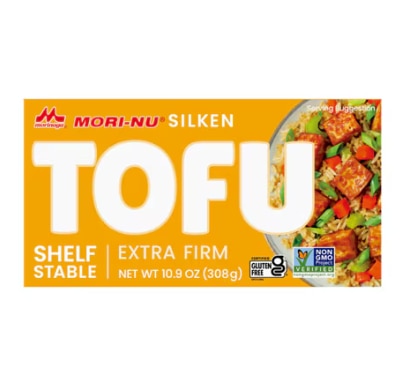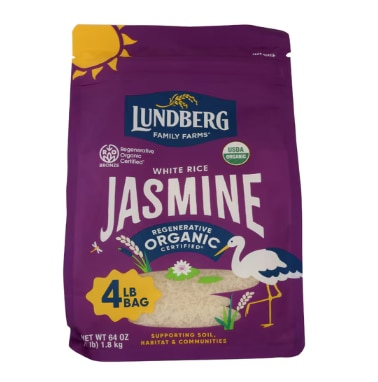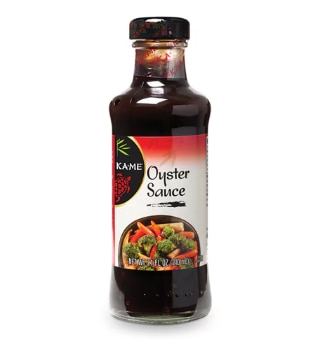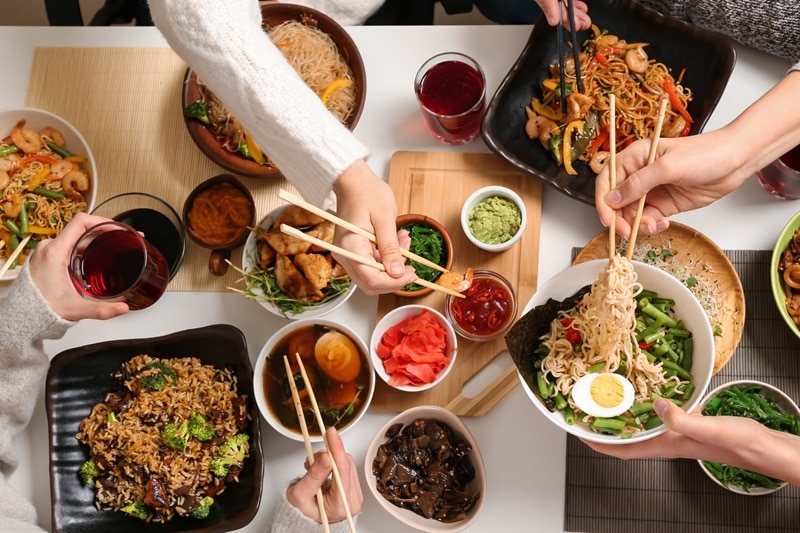My husband and I met in Hangzhou, China, in 2011 when I was there as an international student. We started dating the next year, and in 2013 he came to Tennessee to study too. Life in the U.S. was like a dream come true for him—except for the food. In China, good food is cheap and flavorful; I could get delicious meals for five yuan, less than a US dollar! But in the U.S., what we often found was Americanized Chinese food like sweet and sour chicken and crab rangoon. And the cost of eating out made the disappointment worse.
My husband never cooked before coming to the U.S., so when we married in 2014, I tried really hard to learn Chinese cooking. I learned from his parents and friends, bought cookbooks, watched tutorials and, over time, I started noticing a trend. There are some times, yes, when I need a recipe to get flavors just right. But for the most part, in over a decade of cooking for my husband, I’ve learned authentic Chinese cooking doesn’t require elaborate recipes—it just depends on a few key tools, ingredients and techniques used well.
Now, in 2025, with two young daughters and a bi-cultural household, I cook Chinese food several times a week to please toddler palates, honor their heritages and give my choosy husband a comforting taste of home–while not breaking the bank or spending all day in the kitchen. Here’s the sweet spot of what you actually need and can get easily in the U.S.
How to Cook Chinese Food: Tools, Ingredients & Tips for Home Cooks
Helpful tools for the Chinese-American kitchen
Rice cooker
This is a must if you are cooking Chinese food, obviously. We use ours daily, as often as our coffee maker. You don’t need a fancy model; our $20 Aroma rice cooker and steaming basket have served us well for years.
A good knife and cutting board(s)
Chinese cooking uses a lot of fresh ingredients and lots of chopping since dishes are often cut into bite-size pieces for chopsticks. Keep a sharp, durable knife (we use three, including a cleaver) and separate cutting boards for meat and vegetables.
Wok or frying pan
This may be controversial, but you don’t need a wok. I know, the heat distribution and wok hei and all that. After ruining my first one, I switched to large nonstick frying pans, which work just fine. We use two daily plus a few smaller pans and pots.
Wooden spatula or spoon
You’re going to be doing a lot of stir frying in that pan, so you need a reliable utensil. Use wood or silicone because plastic melts and metal scratches. If you want to impress your Chinese friends, you could always just cook with chopsticks, as many do in China! A note about chopsticks: wooden ones are easier to use than metal or plastic ones.
Bonus tools
An electric water boiler (for tea and hot water, which many Chinese people believe is better for digestion) and an electric wok for hot pot nights.
Staple ingredients to have on hand
Jasmine rice
Whenever I cook, I start the rice cooker first to make rice while I prepare the rest of the dishes. Chinese rice is typically short-grain and a bit sticky, so jasmine is a great, easy-to-find option. I know I’ve nailed a dish when my husband calls it xia fan, meaning it goes well with rice.
Noodles
For variety, switch to noodles. There are countless varieties of Chinese noodles, and everyone has preferences. My husband prefers thicker ones, and even spaghetti works in a pinch!
Vegetable oil
Much like my wok comments, I might get hate for this, but you don’t have to use specific oils for Chinese cooking. Yes, peanut or sesame oil would be more authentic, but vegetable or canola oil are just as good, and they’re easier to get in the U.S. Plus, peanut or sesame oil can easily overpower a dish, whereas vegetable or canola oil are neutral.
Fresh garlic and ginger
Mexican cuisine needs chili powder and cumin; Indian cuisine needs turmeric and garam masala; and if you’re cooking Chinese, you need garlic and ginger. Nearly every dish is made with them.
Corn starch
A lot of American dishes use cream as a thickener, but in Chinese cooking, it’s starch. There are many starches used, like sweet potato or tapioca starch, but corn starch is the easiest one to find in the U.S.
Tofu
I make sure I have tofu in the fridge for quick meals. My family–especially my two-year-old–prefers the extra firm. Tofu can either be the star of the recipe, like tofu and cilantro vinegar salad or tofu and vegetable stir-fry, or it can just be tossed in to give a little extra filling. Either way, it’s always a winner.
Eggs
Similarly, we use eggs in a lot of cooking–breakfast, lunch, and dinner! Egg and tomato stir fry is a favorite, fried eggs on congee with chili crisp is one of my husband’s favorite breakfasts, and scrambled egg ribbons add texture to a soup.
Meat
Most Chinese dishes use a little meat and a lot of vegetables. Pork and beef are most common, while lamb and duck are more difficult and more expensive in the US. Thinner cuts are more xia fan; my husband is always telling me to cut thinner, smaller pieces. And in Chinese cuisine, the bones are kept in to retain flavor.
Seafood
Though fish is a big part of Chinese cuisine, whole fish is traditional but less common in the U.S. I keep frozen fish and shrimp on hand for stir fry, and I love suan cai yu (pickled vegetable fish soup), which is relatively easy to make here.
Vegetables
Our vegetable drawer in the fridge is always full because veggies are the real star of Chinese cooking. Some of my daughters’ favorites that incorporate well into Chinese food are broccoli, carrots, peas and edamame, but bok choy, napa cabbage, bamboo, bean sprouts, peppers and mushrooms (especially shiitake mushrooms) are common in many Chinese recipes too.
Bonus staples
Frozen dumplings for quick meals, seaweed sheets (for my six-year-old) and sunflower seeds (for my husband)
Less common but handy
Star anise, wood ear mushroom and fermented red bean paste are nice to have but are not used daily.
Authentic sauces for flavorful dishes
Soy sauce
This is obviously used a lot in Chinese cooking but not in the way that most Americans think. You don’t usually put soy sauce on rice or dip your food in it, but rather, it’s used as a sauce in stir fry dishes and soups. Look for both light and dark varieties if you can find them because they add different depths of flavor.
Black vinegar
This is one that you’ll need to get at the international grocery store too, but it’s one I use a lot. A splash of this often fixes a dish that tastes like something’s missing.
Chinese cooking wine
This is often used in a slurry with corn starch for a marinade, but it can also be used as a sauce in stir fry dishes to add some earthiness.
Hoisin sauce
This is a sweet and savory sauce to balance the salty and sour and helps thicken sauces.
Oyster sauce
This sauce is also sweet, thick and umami, but with a subtle seafood flavor. In my experience, Americans prefer hoisin, whereas Chinese taste buds prefer oyster sauce. But both are great!
Chili crisp
My husband loves spicy food, as do many Chinese people from all over the country, so having some spicy sauce to either put in the cooking or add on top is really important. Lao Gan Ma is a well-known brand, but there are many options or you can make your own.
How to find your rhythm in the kitchen
Once your pantry’s stocked and tools are ready, Chinese cooking follows a consistent rhythm. I’d say 80% of our meals follow this pattern:
- Gather, wash, and chop meats and vegetables.
- Start the rice.
- Mince garlic and ginger, and stir-fry briefly in oil until aromatic.
- Add the meat, cook until browned, then remove.
- Stir-fry vegetables, starting with firm ones and adding greens last.
- Return meat to the pan, add sauces to taste, and finish cooking.
- Serve directly from the pan with rice in small bowls and chopsticks.
(Pro tip: leftovers go perfectly into lunchboxes the next day.)
And there you have it, how to cook authentic Chinese food in an American kitchen from someone who’s been doing it for over a decade now, one rice cooker cycle at a time. With time and practice, you’ll be saying hao chi, xia fan, zhen shuang, and maybe even the best compliment, hao xiang jia xiang cai – “It tastes just like home!”
Featured Products



The post Authentic Chinese Cooking Made Simple: Tools, Tips & Pantry Staples first appeared on The Upside by Vitacost.com.

